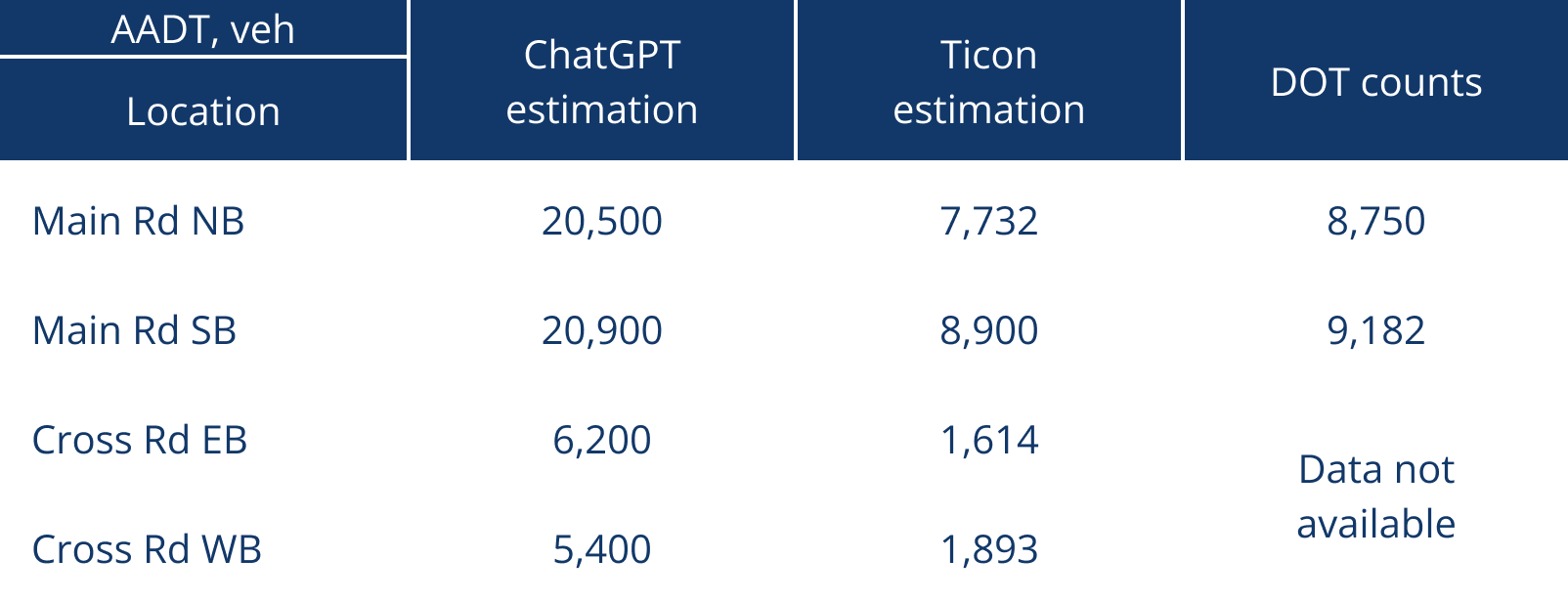https://csite.ticon.co/post/ai-is-artificial-but-is-it-always-intelligent

Try TrafficZoom’s AADT metrics today with a free trial
Get instant access nowAbout two months ago, ChatGPT, a high-capacity chatbot that employs an enhanced version of OpenAI's AI technology to converse in simple English, has been introduced to the world. Despite the fact that prior versions of GPT have been in use for some time, this model has surpassed a milestone: it is claimed to be truly practical for a broad range of activities, from software creation to business idea generation to writing a wedding toast. Although previous iterations of the system could theoretically accomplish these tasks, the quality of the outcomes was much inferior to those created by a typical human. The new model, on the other hand, is supposedly vastly superior… or is it?
At Ticon, we are no strangers to AI. We implement machine learning and other forms of artificial intelligence in our data crunching algorithms. So naturally, we were, as much as the rest of the world, intrigued about ChatGPT’s capabilities. “Let’s ask ChatGPT a question about the work we do every day – what are the traffic flow numbers for a particular location” – we decided.
The first attempt was not entirely successful; ChatGPT admitted that it does not know anything beyond 2021 threshold. This limitation did not discourage us, though. Fortunately, Ticon has data archives going back for a decade, so we offered ChatGPT another chance of proving its capabilities, saying: “Okay, just give us your results for 2020, please!”
ChatGPT spent a few milliseconds thinking, and then typed out a list of AADT for all the directions at the specified intersection, with comments on seasonal and intraweek variations, just as we asked it to do.
It did not take us long to get the actual numbers for the same location from our model, and soon we had the results side by side. So, what were the conclusions?
Unfortunately for ChatGPT, for now it is not qualified to be hired at Ticon as traffic analyst. It could be the data it used, or the averaging method it applied, but for whatever reason, the data was way off: on major roads by at least 135%, and on secondary roads – up to 3 times off the actual values (see Table 1 below for exact numbers).

But we cannot hold this against ChatGPT. With real quality if current data of all types – from traditional detection to connected cars – cross verification is the must. Moreover, the traffic analysis is a complex, multi-stage process that requires thorough understanding of many non-interlapping concepts. As such, it is better left in the hands of the competent professionals.
In defense of ChatGPT we must add that it made, in the end of its report, a very astute conclusion: “… these traffic flow statistics are based on AADT data, which provide an average estimate of traffic volumes. Traffic patterns can vary significantly depending on the time of day, day of the week, and other factors, so real-time data would provide a more accurate picture of traffic flow at the intersection”. And the sad truth is that even some commercial companies peddle that same average estimate with similarly limited accuracy as if it were the true, applicable factual data.
This is why, until we’ll evaluate the next generation of AI, we invite you to get your traffic reports at Ticon, where they are guaranteed to be ample, accurate and up-to-date.














